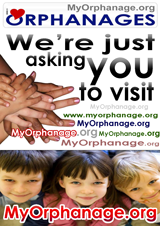Respecting local values: Western confusion about African orphans
When a remote area of South Sudan was resettling from the long-running civil war in 2001, tens of thousands of returnees were threatened by the upcoming rainy season without food. A small team was dispatched to assess and prioritize the needs of internally displaced people (IDPs) resettling in a corner of South Sudan. (Sudan continues to have the largest number of IDPs in the world, even without exact numbers from half the country.) I was part of the team in a village of 1,000 residents, where roughly 30% were orphaned children whose parents had been killed in the war or died without medical care.
Our team was horrified when we learned that lions actively hunted in this area, killing children daily without protection of shelter or family. As a result, protecting the most defenseless residents became our immediate concern. Elsewhere in Africa, top-down Western aid builds orphanages in such situations, but I knew the Western and African concepts of family and “orphans” are different. There are already so many orphanages that the website orphanage.org lists dozens to solicit donations and encourages readers to check back because “orphanages are being added frequently.” You can even be an orphanage tourist for a week!
Ubuntu is an African concept of interconnectedness, of a collective belonging and understanding of interdependence. In different regions of Africa it has varying rights and responsibilities, and I was unsure of the application in this remote place. I asked the village’s women’s council about who was caring for the orphans and they admitted there wasn’t enough food to share. We went on to discuss food security and our NGO’s role in helping the IDPs resettle. We promised food assistance for their transition and planting resources and asked if they would they take these children into their homes as part of their family, since the orphans were from their tribe. They readily agreed it was their responsibility, as these were the children of extended family members. With this agreement in place, within weeks all but five children were connected to extended family members that cared for them as their own children.
True to our word, our NGO brought in emergency food supplies, then seeds and agricultural tools. A year later, insufficient rain created a temporary food crisis and we again brought in supplemental food supplies to help them get through. Our commitment was to the village, that they survive the transition to self-sufficiency.
Within a short time of our first visit, there were no more lion attacks on helpless children and we never heard another word about the hundreds of orphaned children. The village has grown to about 15,000 people and today they grow the food they need. By making a commitment to this village, we helped the village to take care of its own challenge. And there was no expensive, Western-style orphanage institutionalizing them until adulthood and no long-term expense. Furthermore, the culture of this village has remained essentially undisturbed. The village leaders can be proud that these children have become part of their ubuntu connections and been raised by relatives speaking their own language and taught the ways of their people.
When aid solutions are empowering and consistent with local values and culture, in my experience they are less expensive, sustainable and more respectful. Interventions can help people get back on their feet to find their own way, not one imposed by aid organizations with agendas or expensive, delaying overhead. Let’s stop pretending that aid work can be ignorant of local values and culture; this is an essential part of constructive aid work.
 From Aid to Equality
From Aid to Equality

